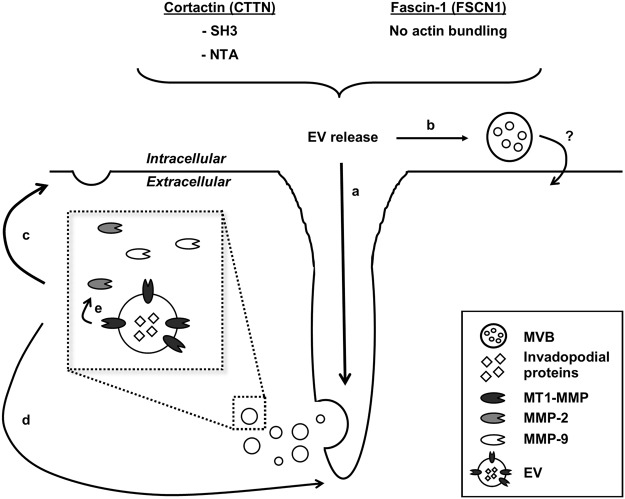Figure 7.
Model summarizing the obtained data. Both CTTN SH3 and NTA domain positively regulate EV release in invadopodia-forming MDA-MB-231. FSCN1 stimulates EV release independent of its actin-bundling function. EVs are preferentially secreted at invadopodia (a), but we cannot rule out the existence of other MVB docking sites (b). EVs are enriched in invadopodial proteins and auto- or paracrine EV uptake presumably stimulates de novo invadopodia formation (c) or stimulates existing invadopodia lifetime and maturation (d). Finally, EV possess matrix-degradative capacity, likely mediated by MT1-MMP, as the EVs are enriched in the membrane-bound metalloproteinase. MMP-9 and MMP-2 are potentially secreted in an EV-independent way and the latter MMPs may be activated by MT1-MMP (e). The concerted action of all MMPs is responsible pericellular matrix degradation and contributes to the overall invasive behaviour of MDA-MB-231 breast cancer cells.

